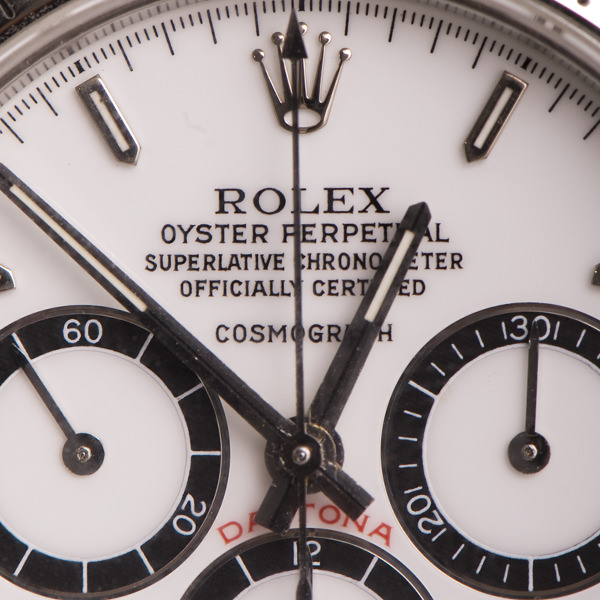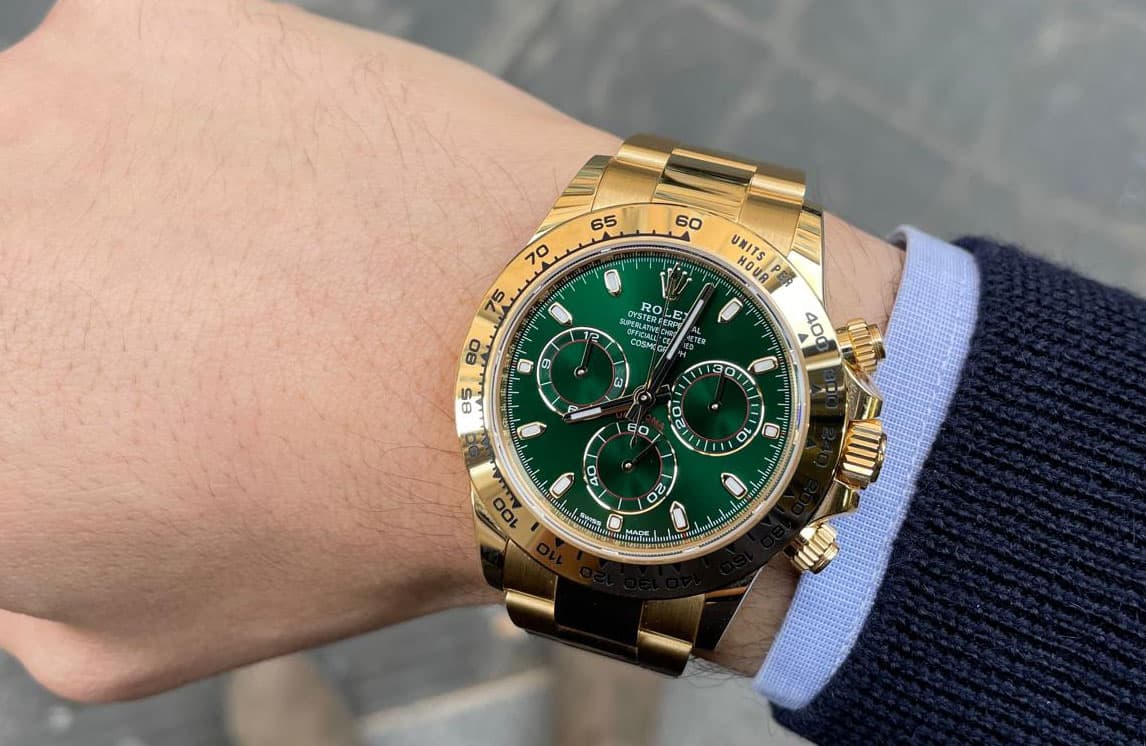Birth of the first Rolex automatic chronograph.
It will be a date to remember as a spark that gives the pentastar brand a great revaluation of all its production. This stems from the fact that the now-established house, unable to meet the market demand, finds itself having to give long lead times resulting in a rise in value, something that continues in our days.
This is the reason why people now invest in something very profitable, which has been established for many years.
Let's talk about the 16520 (first automatic chronograph).
The parent company after choosing the caliber (mechanism) to be used, to be precise the "Zenith 400 El Primero," with 36000 alternations and a frequency of 5 HZ, using a special dry lubricant based on Molybdenum Bisulfide applied by means of a vaporization process, which required specific equipment and maintenance every two years or so, decided to deeply elaborate the basic caliber Zenith El Primero, so much so that 200 modifications were needed so that it could be equalized with its own quality standards.
The first necessary interventions were made to reduce the number of alternations (from 36000 to 28000) and decrease the frequency from 5 to 4 HZ. They mounted a larger balance wheel on the movement that oscillated at a lower frequency, common to all calibres Rolex of the time. Rolex Thus simplified and improved the reliability of that movement.
The balance wheel Rolex has four glucydur spokes with spiral Breguet and micro-star adjustment system. The lubricants used for the 4030 were the traditional fluid ones, such changes allow a Rolex to recommend an overhaul every 4 years, almost twice as long as the original caliber.
The 4030 movements mounted on the Daytona first series serial R ref. 16520/3/8 have numbering between 10000 and 20000 (random numbering that also takes into account the later serial L). Early bezels (for taking speed measurements) were at 200 .
A designer of this watch, often traveling to Paris on a high-speed train, spent time amusing himself by measuring speed with his Daytona 16520 (amusing that his being one of the prototypes, it had no serial and mounted test dials). The train was traveling at much more than 200km/h, so he realized that for the modern world a meter with a scale at 200 was insufficient and proposed to redesign the scale with a higher limit (400 uph the first one was made with intermediate at 225).
Another interesting feature is the dial Floating, thought to be produced in one hundred examples of each version (gold, steel and gold, and steel; the latter rarer than the equal steel and steel and gold types as dials). This manufacturing process was very long and complex, involving exposure to high-temperature furnaces and then the application of inscriptions. The latter depending on the level of drying of the dial, to when the inscriptions were placed, created the various levels of floating (porcelain 1/2/3 level).
Today this type of watch from an original value of about €1713 is up to about €50000. It is called the new Newman and with a number of pieces produced, I repeat about 100 for steel versus about 300 for a 6263 Newman steel (current value 300000), perhaps it will have a future of great increase in value. I invite you to think about your future investments is we will always be at your utmost disposal to accompany you on this path, with the guarantee of our now historical seriousness.
We at Bonanno Jewelry have a large collection of watches Vintage.

